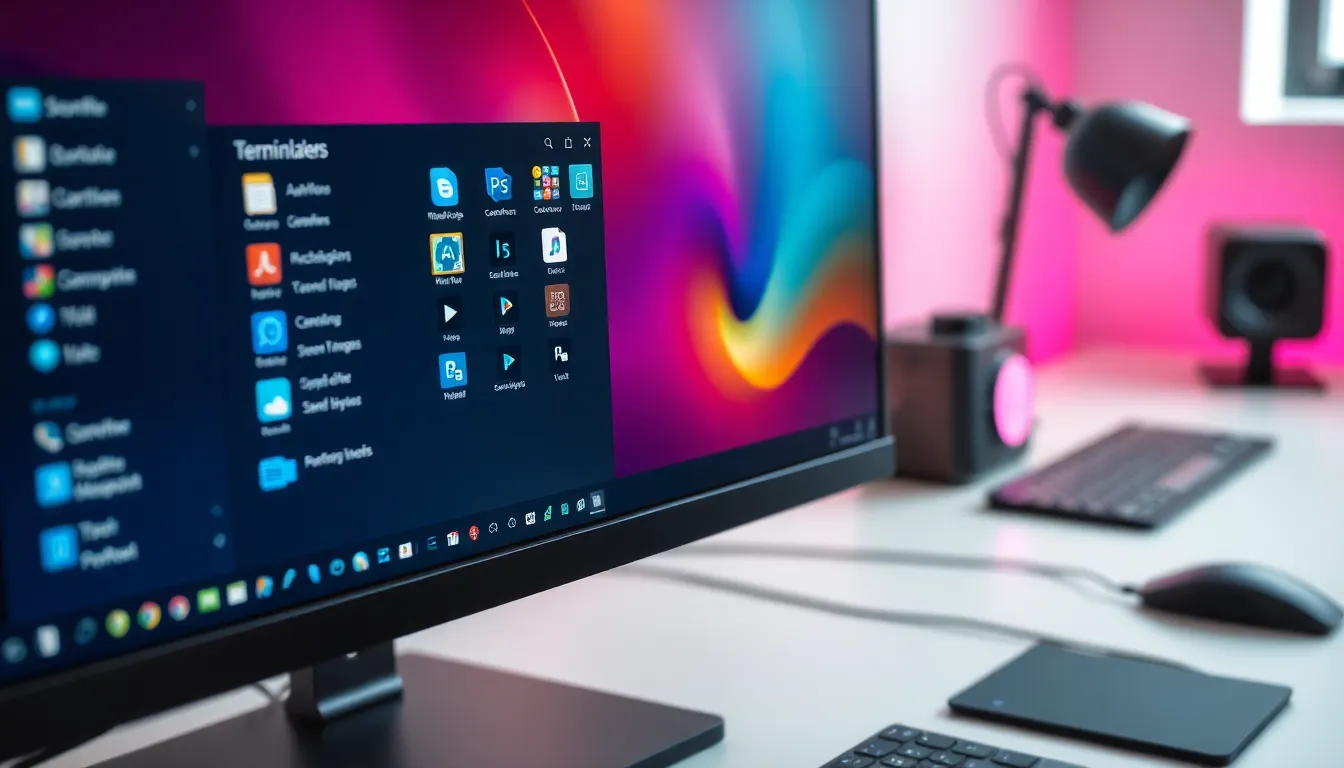Table of Contents
ToggleIf you think Windows Terminal is just another pretty face in the sea of command-line interfaces, think again. This powerful tool can transform the way users interact with their systems, making them feel like coding ninjas in no time. With a few clever tips and tricks, it’s possible to unleash the full potential of this terminal and boost productivity to levels previously thought impossible—like finding a unicorn in your backyard.
Overview of Will Fuqua Windows Terminal
Will Fuqua Windows Terminal stands out as a versatile command-line interface designed to improve user productivity. Many users find its aesthetic appeal combined with robust functionality enhances their interaction with the system. Developers and system administrators often benefit from its multi-tab capability, allowing them to work on various tasks simultaneously without losing context.
Customization options enable users to tailor the appearance and functionality to suit personal preferences. Themes and color schemes provide visual comfort, while key bindings streamline command execution, making workflows more efficient.
Additionally, the integration with Windows Subsystem for Linux (WSL) offers seamless access to Linux tools and commands. Users can run native Linux applications alongside Windows applications, creating a hybrid environment that speeds up development processes.
Performance optimization features, such as rendering speed improvements and GPU acceleration, further enhance user experiences. Error handling tools allow users to quickly troubleshoot issues, minimizing downtime and maximizing productivity.
Keyboard shortcuts increase efficiency by reducing reliance on mouse navigation. It’s crucial for users to familiarize themselves with these shortcuts to fully exploit the terminal’s capabilities.
Will Fuqua Windows Terminal represents a powerful tool integrated with features that elevate productivity levels and streamline workflows. Engaging with this terminal fosters a better understanding of the system, leading to more effective and efficient usage.
Essential Features of Windows Terminal

Windows Terminal offers numerous features that enhance user experience and efficiency. With strong customization options and unique key bindings, this tool allows users to tailor their interface to fit their needs.
Customization Options
Customization options in Windows Terminal provide flexibility for users. Users can select different themes, colors, and backgrounds that suit their preferences. They can also modify the font style and size for better readability. Moreover, the option to create and manage profiles enables users to personalize specific environments for different tasks. Adjusting these settings fosters a unique experience that enhances productivity. Customization not only appeals to individual tastes but also improves workflow efficiency.
Key Bindings
Key bindings streamline navigation and enhance productivity in Windows Terminal. Users can assign specific commands to chosen keys, allowing for faster execution of common tasks. Implementing these shortcuts reduces reliance on mouse actions, increasing efficiency. Additionally, users can access the default key bindings and modify them to better fit their working style. Familiarity with these key bindings results in quicker command execution, boosting overall productivity. Understanding and using these shortcuts can significantly improve user interaction with the terminal.
Tips for Enhanced Productivity
Windows Terminal offers various techniques to elevate productivity for users. Exploring established shortcuts and command efficiencies significantly speeds up daily tasks.
Terminal Navigation Shortcuts
Effective navigation is crucial for productivity in Windows Terminal. Users can leverage keyboard shortcuts such as Ctrl + Shift + T to open a new tab quickly. Ctrl + Tab cycles through open tabs, while Alt + Arrow keys navigates between panes. To split the terminal screen, Alt + Shift + D divides the view into two sections. Custom shortcuts can enhance this experience further; users can create key bindings that suit their workflow. Knowing these shortcuts reduces reliance on the mouse, making interactions faster and more efficient.
Effective Command Usage
Mastering command usage enhances productivity in Windows Terminal. Utilizing commands like git status provides instant insights into repository status, while cd commands facilitate quick directory changes. Users benefit from command history through the Up Arrow key, allowing quick access to previously executed commands. Piping results with `
|
` enables chaining of commands seamlessly, creating powerful workflows. Integrating aliases for frequent commands, users streamline their processes significantly. Each technique contributes to a more effective and efficient work environment within Windows Terminal.
Tricks for Managing Multiple Tabs
Navigating multiple tabs efficiently enhances productivity in Windows Terminal. Users can implement specific strategies to optimize their workflow.
Creating Profiles
Profiles in Windows Terminal allow users to tailor their environment for unique tasks. Setting up profiles involves defining custom settings for each tab, such as color schemes, fonts, and command prompts. Users access the settings file through the dropdown menu, making modifications straightforward. Saving a profile named “Development” might include configurations designed for coding. Each profile can represent a different development environment or tool, facilitating quick transitions between tasks. Effectively managing profiles boosts efficiency in specialized workflows.
Using Splits for Workflow
Using splits in Windows Terminal empowers users to view multiple command-line interfaces simultaneously. Pressing Alt + Shift + D splits the terminal into different panes, allowing for multitasking. Each pane still supports independent commands and profiles, maintaining a clear workspace. Users may run a server in one pane while monitoring logs in another, maximizing productivity. This feature is crucial for developers managing various aspects of their projects concurrently. Organizing tasks across splits creates a streamlined workflow that enhances focus and efficiency.
Advanced Productivity Hacks
Advanced features in Windows Terminal significantly boost productivity. Users can integrate their preferred development tools seamlessly into the terminal environment.
Integrating with Development Tools
Various development tools enhance the functionality of Windows Terminal. Git commands become easily accessible, allowing developers to manage version control directly from the terminal. Tools such as Docker can run containers without switching environments, streamlining workflows. Additionally, integration with IDEs like Visual Studio Code supports direct terminal access, simplifying development processes. Support for extensions enables users to customize their terminal interactions, creating a more efficient workspace tailored to their needs.
Automating Repetitive Tasks
Automation in Windows Terminal eliminates repetitive tasks and saves time. Users can create scripts or use tool integrations like PowerShell to automate routine commands. With custom aliases, repetitive commands shorten into simpler keywords, increasing efficiency. Task scheduling can also start scripts at planned intervals without manual execution. Incorporating these automation strategies fosters a smoother workflow, allowing developers to focus on more critical tasks rather than mundane actions.
Embracing Will Fuqua Windows Terminal opens up a world of possibilities for enhancing productivity. Its blend of aesthetic appeal and powerful functionality makes it an essential tool for developers and system administrators alike. By mastering the tips and tricks outlined, users can streamline their workflows and navigate their environments with ease.
The ability to customize profiles and leverage keyboard shortcuts transforms how tasks are managed. Incorporating advanced features like automation and integration with development tools further elevates the user experience. Ultimately, leveraging these insights allows users to work smarter and achieve greater efficiency in their daily tasks.







